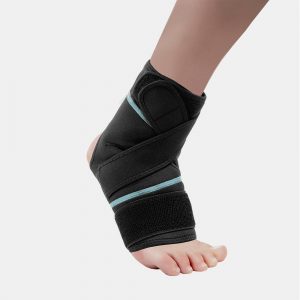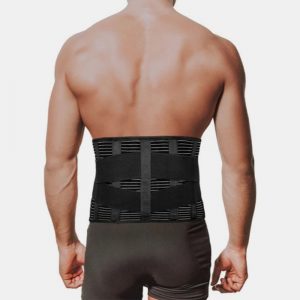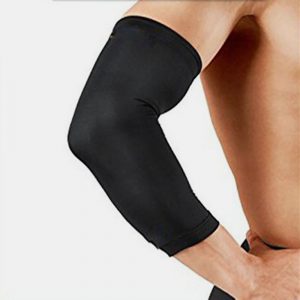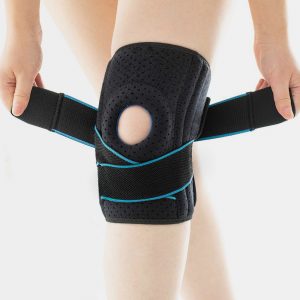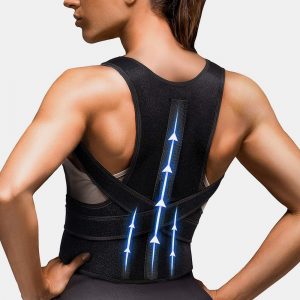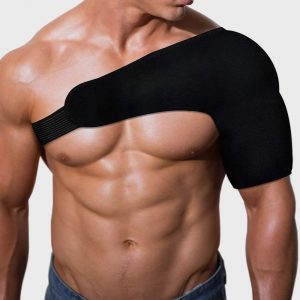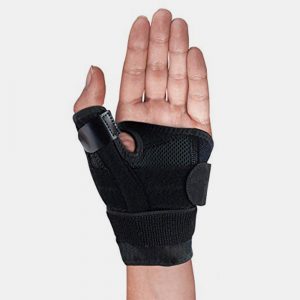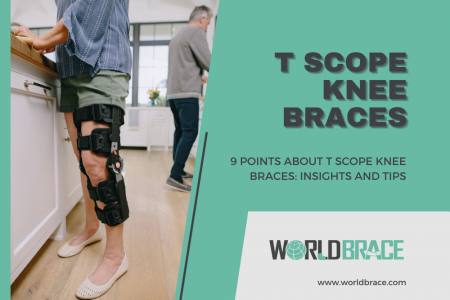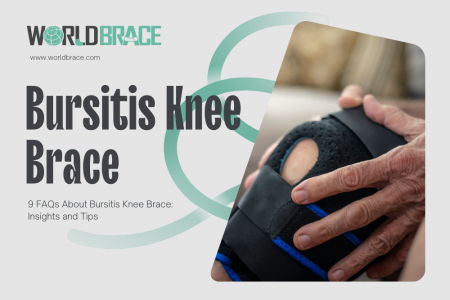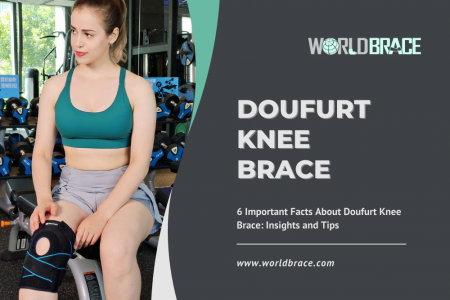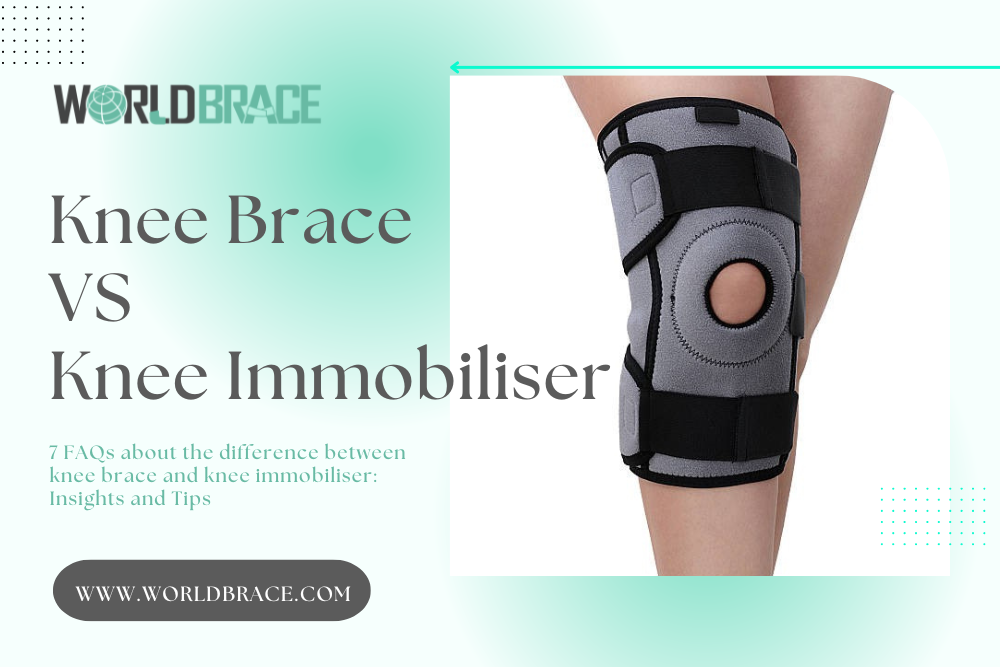
فهم الأساسيات
ما هي الوظيفة الأساسية لدعامة الركبة؟
دعامات الركبة هي أجهزة لتقويم العظام مصممة لتوفير الدعم والثبات والحماية لمفصل الركبة. تُستخدم عادةً للمساعدة في تخفيف الألم والانزعاج المرتبط بإصابات وحالات الركبة المختلفة، مثل التواء الأربطة أو تمزق الغضروف المفصلي أو التهاب المفاصل. وتتمثل الوظيفة الأساسية لدعامة الركبة في المساعدة في الحفاظ على المحاذاة السليمة للركبة وتقليل خطر التعرض لمزيد من الإصابات وتقديم الدعم أثناء ممارسة الأنشطة البدنية. واعتماداً على نوع مشكلة الركبة وشدتها، تأتي دعامات الركبة بأنماط مختلفة، بما في ذلك التصاميم المفصلية والكمية والملتفة، وكل منها يقدم مستويات مختلفة من الدعم.
كيف يختلف مثبت الركبة عن مثبت الركبة في الوظيفة؟
على عكس دعامات الركبة، تؤدي أجهزة تثبيت الركبة دوراً مميزاً في تقييد حركة الركبة بالكامل. وغالباً ما توصف هذه الأجهزة بعد العمليات الجراحية أو الإصابات الكبيرة في الركبة عندما يكون التثبيت الكامل مطلوباً للشفاء السليم. عادةً ما تكون مثبتات الركبة مصنوعة من مواد صلبة مثل البلاستيك أو المعدن وهي مصممة لإبقاء الركبة في وضع ثابت، مما يمنع أي ثني أو انثناء. تُستخدم عادةً في حالات تمزقات الأربطة الشديدة أو الكسور أو بعد جراحة استبدال الركبة. تتمثل الوظيفة الأساسية لجهاز تثبيت الركبة في ضمان ثبات الركبة وتثبيتها خلال المراحل المبكرة الحرجة من التعافي.
الاختلافات الرئيسية في التصميم
كيف تختلف دعامات الركبة في التصميم عن مثبتات الركبة؟
تختلف دعامات الركبة ومثبتات الركبة اختلافاً كبيراً في تصميمها. عادةً ما تكون دعامات الركبة أكثر مرونة وتوفر نطاقاً من الحركة مع توفير الدعم. وهي تأتي بتصميمات مختلفة لتلبية احتياجات محددة، مثل الدعامات المفصلية التي تسمح بالتحكم في الحركة أو الأكمام الضاغطة لمزيد من الراحة. أما مثبتات الركبة، من ناحية أخرى، فهي صلبة ومصممة لتثبيت مفصل الركبة في مكانه. وهي تتكون من أحزمة وتثبيتات ولا يسمح تصميمها بثني الركبة. يعتمد الاختيار بين الدعامة ومانع الحركة على طبيعة الإصابة ومستوى الدعم المطلوب.
ما هي الاختلافات في الملاءمة بين الدعامة ومانع الحركة؟
تختلف ملاءمة دعامات الركبة ومثبتات الركبة أيضاً بشكل كبير. فغالباً ما تكون دعامات الركبة مثبتة بشكل مترابط وتأتي بأحجام مختلفة لتوفير ملاءمة مريحة حول مفصل الركبة. وهي مصممة لتوفير التوازن بين الدعم والحركة. وعلى النقيض من ذلك، عادةً ما تتوفر مثبتات الركبة بمقاسات محددة ويتم ارتداؤها خارجياً لتغطي الساق بالكامل من الفخذ إلى ربلة الساق. يجب أن تكون ملاءمتها أكثر قابلية للتعديل وتركز فقط على إبقاء الركبة ثابتة. من الضروري التأكد من الملاءمة الصحيحة لكلا الجهازين لتحقيق أقصى قدر من الفعالية مع تقليل الانزعاج إلى الحد الأدنى.
اختيار الخيار المناسب
ما الخيار الأفضل للوقاية من الإصابات؟
للوقاية من الإصابات، تُعد دعامات الركبة هي الخيار المفضل بشكل عام. فهي توفر الدعم والثبات مع السماح بدرجة من المرونة، مما يجعلها مناسبة لمختلف الأنشطة البدنية. وغالباً ما يستخدم الرياضيون دعامات الركبة لتقليل خطر إصابات الركبة أثناء ممارسة الرياضة. ومع ذلك، من الضروري استشارة أخصائي الرعاية الصحية لتحديد النوع المناسب من دعامات الركبة بناءً على الاحتياجات الفردية ومستويات النشاط.
في أي الحالات يكون مثبت الركبة أكثر ملاءمة؟
تُعد مثبتات الركبة أكثر ملاءمة في الحالات التي يكون فيها التقييد الكامل لحركة الركبة ضرورياً، وعادةً ما يكون ذلك في حالات الإصابة الشديدة أو التعافي بعد الجراحة. وهي فعالة في منع حدوث المزيد من الضرر وضمان الشفاء السليم. قد يصف مقدمو الرعاية الصحية مثبتات الركبة عندما يكون هناك خطر تفاقم إصابة موجودة من خلال حركة الركبة ولو كانت طفيفة. من الضروري اتباع النصائح الطبية عن كثب عند استخدام مثبتات الركبة لتحقيق أفضل النتائج الممكنة من حيث الشفاء والتعافي.
إدارة الراحة والتنقل
كيف تختلف الراحة بين دعامات الركبة ومثبتات الركبة؟
الراحة عامل حاسم عند التفكير في أجهزة دعم الركبة. توفر دعامات الركبة وأجهزة تثبيت الركبة مستويات راحة مختلفة بناءً على تصميمها والغرض منها. وغالباً ما تُعتبر دعامات الركبة، المصنوعة عادةً من مواد قابلة للتهوية وأشرطة قابلة للتعديل، أكثر راحة للارتداء اليومي. فهي توفر الدعم دون تقييد الحركة تماماً، مما يجعلها مناسبة للأفراد الذين يعانون من مشاكل خفيفة إلى متوسطة في الركبة ويرغبون في الحفاظ على مستوى معين من الحركة. ومع ذلك، من الضروري اختيار المقاس والنمط المناسبين لضمان الراحة المثلى.
وعلى النقيض من ذلك، فإن مثبتات الركبة مصممة في المقام الأول لتثبيت الركبة وتثبيتها. في حين أنها يمكن أن تكون مريحة لفترات قصيرة، فإن ارتداء مثبت الركبة لفترة طويلة يمكن أن يصبح غير مريح. يمكن للهيكل الصلب والانحناء المحدود أن يقيد الحركة الطبيعية، مما يجعلها أقل راحة للأنشطة اليومية. ولذلك، يمكن أن تختلف الراحة بشكل كبير بين دعامات الركبة ومثبتات الركبة، ويعتمد الاختيار على الاحتياجات المحددة للفرد.
الحفاظ على القدرة على الحركة أثناء استخدام جهاز دعم الركبة
يُعد الحفاظ على الحركة من أهم اهتمامات العديد من الأفراد الذين يعانون من مشاكل في الركبة. وسواء اخترت استخدام دعامة الركبة أو مثبت الركبة، فمن الضروري تحقيق التوازن بين الدعم والحركة. بالنسبة لمستخدمي دعامة الركبة، هناك تمارين واستراتيجيات لضمان عدم المساس بالحركة. غالباً ما يوصي أخصائيو العلاج الطبيعي بتمارين محددة لتقوية العضلات المحيطة وتحسين ثبات الركبة. بالإضافة إلى ذلك، يمكن أن يساعد اتباع العودة التدريجية والمنضبطة إلى الأنشطة العادية المستخدمين في الحفاظ على الحركة مع الاستفادة من دعم الدعامة.
عند استخدام مثبت الركبة، قد يكون الحفاظ على الحركة أكثر صعوبة بسبب طبيعته المقيدة. ومع ذلك، يلعب العلاج الطبيعي دوراً حيوياً هنا أيضاً. يمكن أن يساعد الجمع بين أجهزة دعم الركبة وتمارين العلاج الطبيعي الأفراد على استعادة القوة ونطاق الحركة. من الضروري العمل عن كثب مع أخصائي الرعاية الصحية لوضع خطة مخصصة تلبي احتياجاتك وأهدافك الخاصة.
التعافي وإعادة التأهيل
أيهما يساعد في عملية التعافي بعد الجراحة؟
يعتمد الاختيار بين دعامة الركبة وجهاز تثبيت الركبة بعد الجراحة على نوع العملية الجراحية وتوصيات الجراح. يشيع استخدام دعامات الركبة في مرحلة التعافي بعد الجراحة لأنها توفر التوازن بين الدعم والحركة. فهي تساعد على تثبيت مفصل الركبة، مما يقلل من خطر الإصابة مرة أخرى مع السماح بالحركة المتحكم فيها لمنع التصلب. وغالباً ما تُستخدم دعامات الركبة في عمليات مثل إعادة بناء الرباط الصليبي الأمامي والرباط الصليبي الأمامي أو إصلاح الغضروف المفصلي أو جراحات الأربطة.
من ناحية أخرى، يوصى عادةً باستخدام مثبتات الركبة في الحالات التي يكون فيها التثبيت الكامل ضرورياً، مثل بعد أنواع معينة من إصلاح الكسور أو إصلاح الأوتار. وهي مصممة لتقييد الحركة بالكامل، مما يضمن بقاء الركبة في وضع ثابت خلال المرحلة الأولية الحرجة من التعافي.
الجمع بين دعم الركبة والعلاج الطبيعي
يُعد العلاج الطبيعي عنصراً أساسياً للتعافي من جراحة الركبة، بغض النظر عما إذا كنت تستخدم دعامة الركبة أو جهاز تثبيت الركبة. يمكن دمج كلا الجهازين في برامج العلاج الطبيعي للمساعدة في عملية إعادة التأهيل. يعمل أخصائيو العلاج الطبيعي مع المرضى لتطوير تمارين وبروتوكولات إعادة التأهيل التي تكمل جهاز دعم الركبة المختار.
بالنسبة لمستخدمي دعامة الركبة، يمكن أن يساعد العلاج الطبيعي في تقوية العضلات المحيطة بالركبة وتحسين المرونة وتعزيز ثبات المفصل بشكل عام. ويضمن الانتقال السلس للعودة إلى الأنشطة العادية.
بالنسبة للأفراد الذين يستخدمون مثبتات الركبة، يركز العلاج الطبيعي على الحفاظ على قوة العضلات ونطاق الحركة في المناطق غير المتأثرة بالتثبيت. والهدف من ذلك هو تقليل ضمور العضلات ومنع تصلب المفاصل. يؤدي أخصائيو العلاج الطبيعي دوراً حاسماً في توجيه المرضى خلال فترة التعافي الآمن والفعال، مما يضمن أفضل النتائج الممكنة.
الاعتبارات طويلة الأجل
هل يمكن ارتداء دعامة الركبة على المدى الطويل؟
إن ارتداء دعامة الركبة لفترة طويلة أمر ممكن بالفعل، ولكن من الضروري التعامل مع الاستخدام طويل الأمد بحذر وبتوجيه من أخصائي الرعاية الصحية. تُستخدم دعامات الركبة بشكل شائع في الحالات المزمنة مثل الفصال العظمي، حيث توفر الدعم المستمر وتخفيف الألم. ومع ذلك، يجب أن يتم ارتداء دعامة الركبة على المدى الطويل تحت إشراف مقدم الرعاية الصحية للتأكد من أنها الخيار الصحيح لحالتك.
يمكن أن يكون لاستخدام دعامة الركبة على المدى الطويل فوائد وعيوب محتملة. في حين أنه يمكن أن يوفر الثبات ويخفف من الانزعاج، إلا أن هناك خطر ضعف العضلات بمرور الوقت بسبب الاعتماد على الدعامة. ولذلك، من الضروري دمج تمارين القوة والحركة المنتظمة في روتينك للحفاظ على صحة الركبة بشكل عام.
الاستخدام طويل الأمد لمثبتات الركبة: ما الذي يجب الانتباه إليه
يعد استخدام مثبت الركبة لفترة طويلة أقل شيوعاً من استخدام دعامة الركبة. وعادةً ما يكون مخصصاً لحالات طبية محددة يكون فيها التثبيت الكامل ضرورياً. يمكن أن يمثل استخدام مثبت الركبة لفترة طويلة بعض التحديات. يمكن أن يؤدي عدم الحركة لفترات طويلة إلى ضمور العضلات وتيبس المفاصل وانخفاض وظيفة المفصل. ولذلك، يراقب أخصائيو الرعاية الصحية عن كثب الأفراد الذين يرتدون مثبتات الركبة لفترات طويلة.
إذا كنت بحاجة إلى مثبت للركبة لفترة طويلة، فمن الضروري الالتزام بتوصيات مقدم الرعاية الصحية الخاص بك والانخراط في العلاج الطبيعي لمواجهة الآثار السلبية المحتملة. بالإضافة إلى ذلك، من الضروري إجراء فحوصات منتظمة مع مقدم الرعاية الصحية الخاص بك لتقييم تقدمك وإجراء أي تعديلات ضرورية على خطة العلاج.
التكلفة والتغطية التأمينية
هل دعامات الركبة مغطاة بالتأمين؟
يمكن أن تختلف التغطية التأمينية لدعامات الركبة حسب مزود التأمين ونوع الدعامة والضرورة الطبية. في كثير من الحالات، قد تغطي خطط التأمين جزءًا أو التكلفة الكاملة لدعامات الركبة إذا اعتُبرت ضرورية من الناحية الطبية. ومع ذلك، فإن الحصول على التغطية غالباً ما يتطلب وصفة طبية من مقدم الرعاية الصحية وحاجة طبية موثقة.
لتحديد ما إذا كان التأمين الخاص بك يغطي دعامات الركبة أم لا، يُنصح بالاتصال بشركة التأمين الخاصة بك والاستفسار عن سياساتها ومتطلباتها المحددة. بالإضافة إلى ذلك، يمكن لمقدم الرعاية الصحية الخاص بك المساعدة من خلال تقديم الوثائق اللازمة لدعم مطالبتك.
مقارنة التكلفة بين دعامات الركبة ومثبتات الركبة
عند المقارنة بين تكاليف دعامات الركبة ومثبتات الركبة، من الضروري مراعاة عوامل مثل نوع الدعامة والعلامة التجارية وأي ميزات إضافية. وعموماً، تميل دعامات الركبة إلى أن تكون أكثر فعالية من حيث التكلفة مقارنةً بأجهزة منع الحركة. وغالباً ما تتوفر دعامات الركبة الأساسية للدعم والثبات بأسعار معقولة نسبياً. ومع ذلك، قد تأتي الدعامات المخصصة أو المتخصصة بتكلفة أعلى.
من ناحية أخرى، يمكن أن تكون مثبتات الركبة أكثر تكلفة بسبب تصميمها وموادها المتخصصة. يمكن أن تختلف هذه التكاليف بشكل كبير بناءً على نوع المثبت المطلوب لحالتك.
في نهاية المطاف، يجب أن يعتمد الاختيار بين دعامة الركبة وجهاز تثبيت الركبة على احتياجاتك الفردية والتوصيات الطبية واعتبارات الميزانية. يمكن أن تساعدك استشارة مقدم الرعاية الصحية في اتخاذ قرار مستنير يتماشى مع أهدافك الصحية ووضعك المالي.
وورلدبريس هي شركة رائدة في هذا القطاع، وتخدم الأفراد الذين يبحثون عن الراحة والشركات التي تحتاج إلى حلول بالجملة بسبب التزامها بالجودة والابتكار. سواء كنت تحتاج إلى دعامات بأعداد كبيرة أو كنت تتعافى بعد حادث، فإن WorldBrace هي الشريك الجدير بالثقة الذي يمكنك الاعتماد عليه لتلبية متطلباتك.

